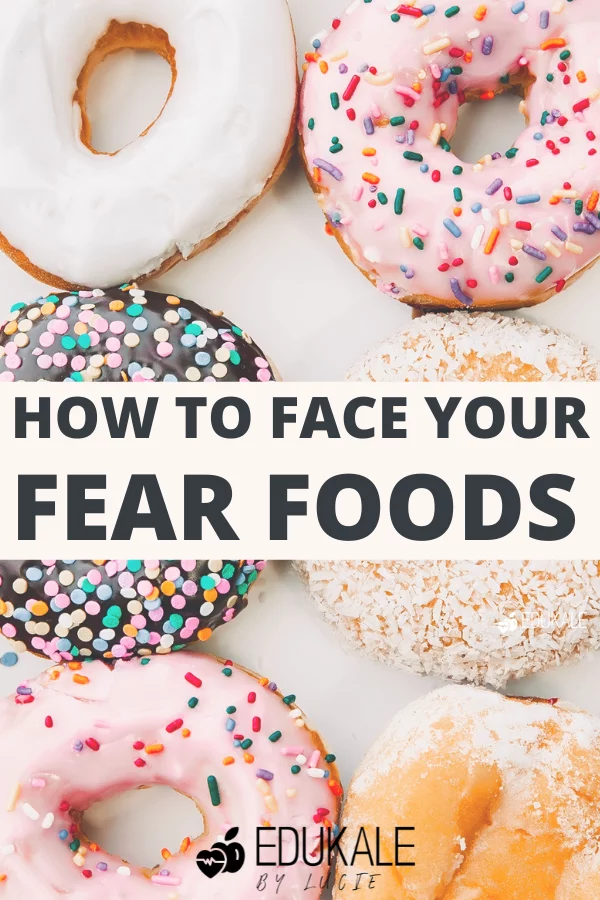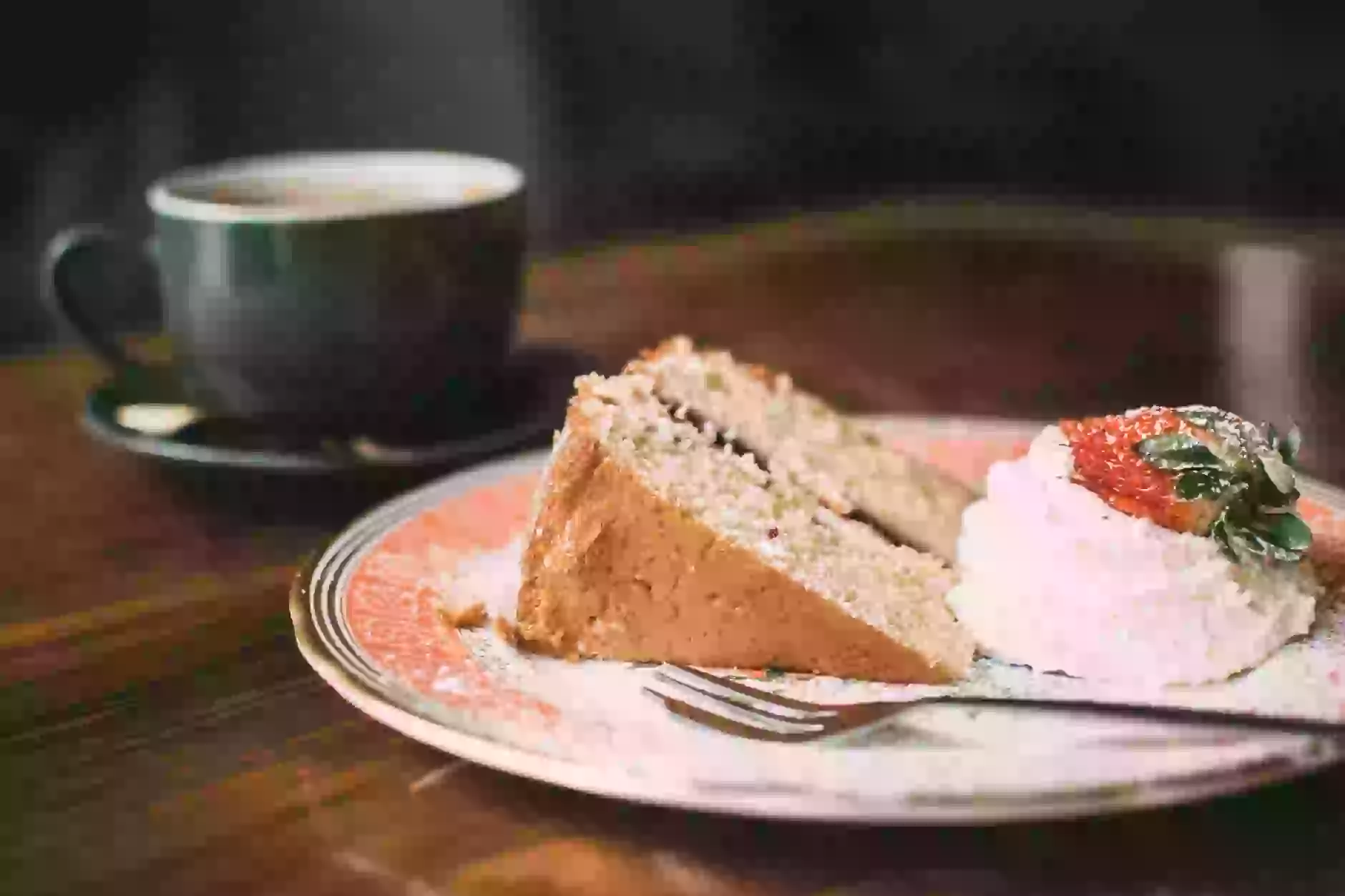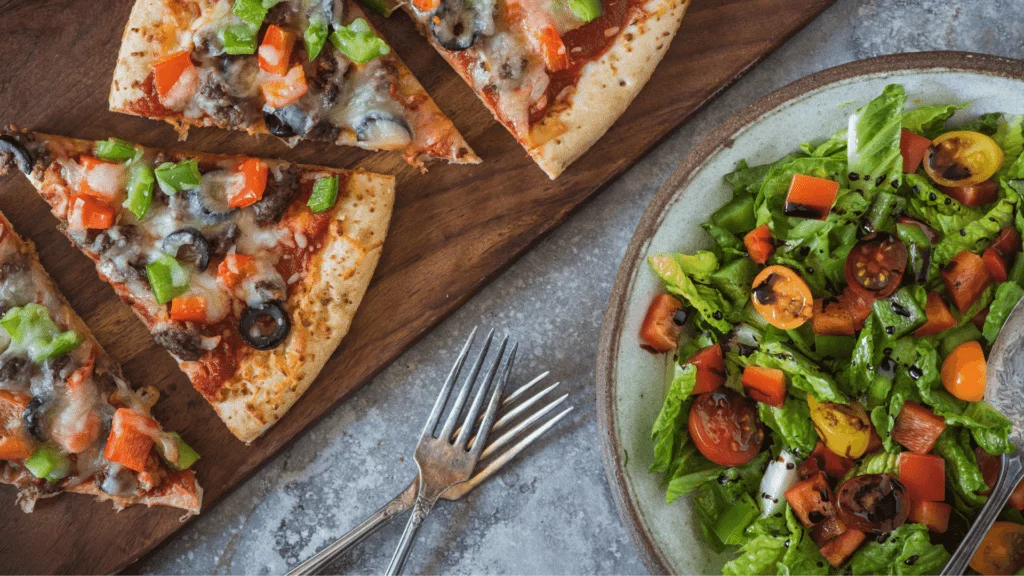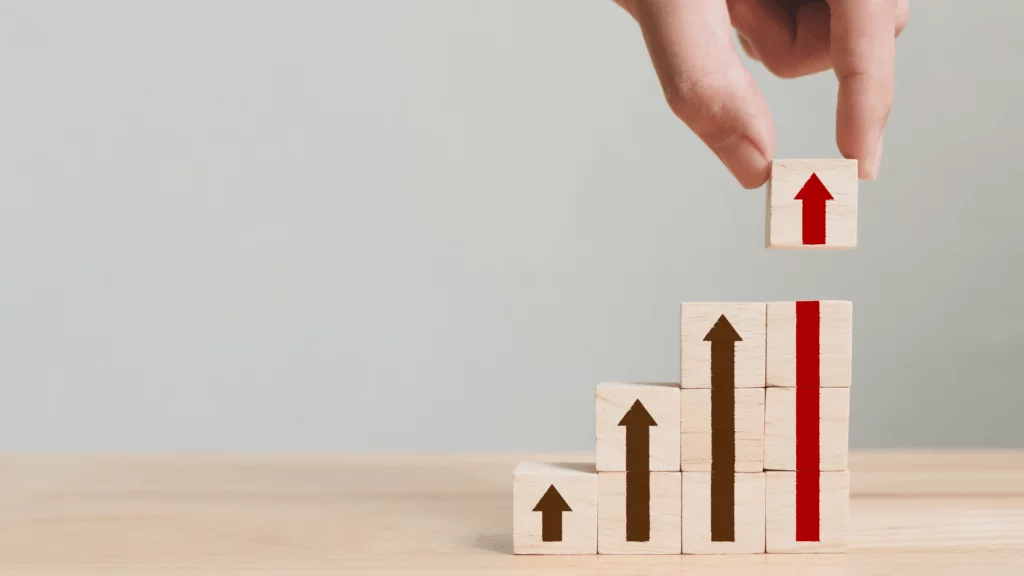Written by Lucie Villeneuve, nutritionist, M.Sc.
This post contains affiliate links from which I may receive a small commission, at no extra cost to you. In no way does this affect my opinion or the information I provide on the product. Please read my disclaimer for more info.
Fear foods are the foods you feel too anxious to consume because you’ve been labeling them as “bad” for too long.
If you’ve ever struggled with an eating disorder or if you have an unhealthy relationship with food, you likely have a ton of these fear foods or trigger foods. You may feel like the only way to deal with them is to ban them from your house completely, but that only reinforces the power they shouldn’t have over you.
What you actually need to do is face these fear foods…and here’s how.

1. Identify your fear foods.
In no particular order, make a list of all the foods that give you feelings of stress or fear, even if the feelings are very moderate.
When you’re done with that, try to give them a number of points or a type of rating from very slight fear food to extreme fear food, until you have around 3-5 categories that hold all of your fear foods.
It’s important to be as honest and exhaustive as possible during this process. Try to include the foods you make excuses not to eat as well: I often have clients telling me that they don’t eat certain foods for taste reasons, but as time goes on we find out that they have tricked themselves into thinking that out of fear.

2. Turn the negatives into positives.
Once you have your list of fear foods, try figuring out the reason why each food produces so much fear to eat. Is it because it’s high in calories? Or because it tastes so good? Maybe because it has a lot of sugar?
You may find that there isn’t really a reason and that you’ve labeled that food a fear food simply out of habit. This can be a first step toward diminishing the fear around this food.
Once you’re done, write something positive about each fear food to combat the negative. Examples may include: this food has plenty of nutrients, this food will give me a quick energy boost, this food is comforting, etc. Make it a habit to affirm the positive thought about that food whenever the negative thought occurs.
3. Create your fear-food exposure plan.
You probably guessed that exposing yourself to your fear foods is the only way to actually get over the fear. The more you’re able to eat the fear food regularly, the quicker it’ll become the norm and the quicker the fear around it will go away.
If you’re able to go “all in” and eat your fear foods whenever you want, go right ahead. But for a lot of people, that may seem pretty daunting and they would rather have a plan.
The main goal is for your fear foods to become neutral foods that you can eat just like any other food. In order for this to happen, you need to incorporate them regularly into your meals without giving them any specific attention.
Start with the foods that are in the slight fear food category and try to add one food item to one of your meals. Gradually add more of that fear food to more of your meals, and you can even add multiple slight fear foods at the same time.
It’s up to you to decide how slow or fast you want to go, how often you’re comfortable incorporating your fear foods, etc. It can be a good idea to work with a professional if you feel like you need guidance with that.

For example, if your fear food is cake, you can start by having a few bites of cake for dessert and gradually move up to an entire slice or even a couple of slices.
You can then go through your list of fear foods gradually and work your way to your more “extreme” fear foods slowly but surely.
I also suggest that you don’t wait until you really crave these foods to eat them, which might set you up for a binge and give the foods unnecessary power. It’s better to have everything planned out and stick to that plan so that these foods are just part of the meal. That way, they won’t seem like a big deal or an intense craving to satisfy.
4. Pair your fear foods with safe foods.
It’s also important to pair your fear foods with safe foods.
Safe foods are foods that aren’t tied to feelings of anxiety or guilt, that you have categorized as healthy, and that you’re comfortable eating. They’ll act as a buffer when you have your fear foods so that you don’t feel too overwhelmed.
You shouldn’t try to have an entire meal of fear foods right away. Instead, pair them with safe foods strategically to make you feel more comfortable with your meal.
For instance, you can pair that pizza slice (fear food*) with a side of salad (safe food), or that cookie (fear food) with a handful of blueberries (safe food).

*Note: I’m not suggesting that you should fear/limit pizza and cookies more than salad and blueberries, I’m just giving examples of common foods that my clients see as fear/safe foods. They look different for everyone!
5. Track your progress.
It can be very helpful to keep track of your progress to motivate yourself while you go through this process.
I really encourage you to keep a journal or notes on your phone to help you do that. It can be a good idea to write down the fear food you had that day, in what amount, and your emotions around the process.
You can rate your anxiety level, note if there was any guilt, pride, or other feelings after finishing the food, and add anything else that feels relevant.
After a while, you should see ratings of feelings like anxiety coming down, and others like relief and pride coming up, acting as good positive reinforcement in the future.
I encourage keeping these records because if you don’t, it’s easy to forget how bad it was in the beginning. This can lead to feeling like you’re making no progress (when you’re actually making a ton!), then feeling discouraged and quitting the process. (Which is definitely not what we want!)
Remember that each journey is unique and that you will certainly experience ups and downs— it’s all part of the process.

Facing your fear foods in conclusion.
In order to get over your fear of certain foods, you need to face them. This means identifying your fear foods, creating a solid fear-food exposure plan, and making sure to track your progress.
Facing your fear foods can be a long and draining process. If you feel like you need one-on-one help and want to have someone to support you along the way, I offer online nutrition coaching sessions: check that out right here!
-Lucie
If you’re interested in nutrition, its impact on our health, and the science behind it, you should definitely read How Not to Die. In this book, Doctor Michael Greger, founder of Nutrition Facts, examines the top causes of death in America and explains how your diet can prevent— and in some cases even reverse— them. His advice is all backed by science and he writes in a very clear and entertaining way. This book isn’t a list of what you already know. It will teach you the keys to living a long healthy life, in a simple and practical way, and without spending fortunes on supplements and pills!
PLUS if you want to take it a step further, you can check out the How Not to Die Cookbook to implement the advice easily!


